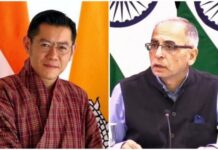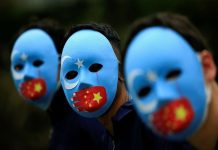Assuming Xi Jinping and Joe Biden finally sit down together next week in San Francisco after a year of posturing, accusations, backchannel signalling and wayward surveillance balloons, the results will be underwhelming.
There is so little trust – a week before the expected meeting, the Chinese had still not formally confirmed Xi’s participation at the Asia-Pacific Economic Cooperation summit – and so many missed opportunities that the “deliverables” will be modest at best even as both sides downplay expectations.
“Neither the United States nor China are entering the potential meeting between President Biden and President Xi expecting to significantly improve or reset the relationship,” said Bonny Lin of the Centre for Strategic and International Studies, a Washington-based think tank.
“Rather, the meeting will be about managing and stabilising the bilateral relationship, improving communication and reducing misunderstandings before they occur.”
Should talks proceed without a sizeable hitch, a major plus would be the message the two leaders send to their respective bureaucracies, especially China’s with its highly centralised system, that re-engagement, however tepid, is back on the agenda.
“The most important thing [is] it sends a signal to their system that the two sides need to have dialogues, and the rest of the system falls into place,” said Bonny Glaser of the German Marshall Fund of the United States, a Washington-based think tank. “It might become difficult to do much in the absence of that higher-level meeting.”
A joint statement is unlikely. Possible deliverables include agreements to talk further or modestly cooperate on climate change, fentanyl and artificial intelligence.
Another area ripe for headway is improved communication between the Pentagon and the People’s Liberation Army, so-called mil-to-mil channels that broke off after then House speaker Nancy Pelosi visited Taiwan 14 months ago.
The American and Chinese sides have one thing in common: neither is likely to get anything close to what they want.
The US wish list includes an assurance that “reckless” behaviour and aggressive hot-dog moves by Chinese ships, fighter jets and quasi-civilian “grey-zone” forces will end and effective hotlines and other communication channels are open if something goes wrong.
Closely related is Washington’s desire to resume serious engagement on strategic stability, arms control and nuclear talks. Although the two sides have held rare arms control talks and a meeting on the South China Sea in recent days, these were led by diplomats, not the military brass that would need to carry out any safeguards.
Beijing is unlikely to make any significant concessions, analysts said, owing to its desire to keep Washington on its back foot and not acknowledge even tacitly that Western allies have a legitimate right to transit the Taiwan Strait or contested South China Sea.
“I don’t think they want an actual crisis that could really spin out of control, even though they want a higher risk profile that will force others to back off,” said Zack Cooper of the American Enterprise Institute, a Washington-based think tank.
“My sense is, given that China has been upping the ante in the South China Sea and transits and flights, we’re not going to see a real change in behaviour here. If that was the case, there would be fewer risky intercepts.”
On China’s wish list is an end to punitive tariffs that were imposed by the Donald Trump administration and continued under Biden. Another huge priority is to see an end to US export restrictions imposed by Washington on high-end semiconductors and other technologies with potential military applications.
“They’re coming to understand that the Biden administration is pursuing a path that is probably even more aggressive than the Trump administration in terms of its sophistication, breadth and scope of some of the technology restrictions,” said Jude Blanchette, also of CSIS.
“Beijing sees the upcoming meeting as an opportunity to try to shift the trajectory, or at least find ways to put brakes on the pace of US actions.
“I think they’re going to be disappointed,” Blanchette added.
Beijing will also seek assurances over Taiwan, including a reaffirmation that the US does not support independence for the self-governing island.
Apec is one of the few multilateral events that Taipei attends as Beijing has succeeded increasingly in limiting its participation in global gatherings.
“China would likely be seeking reassurance from the US in reiterating its one-China policy,” said Naiyu Kuo of the Eurasia Group, a New York-based consultancy, and that Washington had “no preference for any candidate” in Taiwan’s presidential election in January.
It is doubtful that China wants to move the relationship forward in any fundamental way. But it does have an interest in dialling down tensions – even if that only lasts until November 2024 – so it can focus on its property crisis and other domestic problems, analysts said.
“The Chinese are interested in stabilising the relationship for the short term,” said Glaser. “It’s tactical not strategic. It’s good to stabilise relations for the next year, even if there’s a new [American] president. And they need more time for their economy.”
Another important outcome will take place away from the cameras as the two try and take their measure of each other.
For the Chinese, that includes judging just how committed the US side is to its tech export restrictions and how much wiggle room there is in Washington’s “smaller yard, higher fences” strategy aimed at tighter limits on fewer items.
For the Americans, this means assessing whether Xi seems to be getting information he may not want to hear given how many loyalists he is surrounded by, and how seriously he takes China’s economic problems.
“The most import thing to come out of the meeting with Xi is not a deliverable. It’s an ability to look him in the eyes and both try and get a bit of understanding on how he’s thinking about issues and also to get some messages to him,” said Cooper, a former US Defence department official.
“People on our side are not sure what’s getting through to him from his team.”
But others say any insights could be few and far between.
“We assume that they’re going to have a real conversation, but in fact many of these are heavily scripted, with reading papers back and forth,” said Jeffrey Moon, founder of China Moon Strategies, a Washington-based consultancy, and formerly with the US National Security Council. “This is not a free-flowing conversation.”
Even if Xi decides to give San Francisco a miss – and there is every indication he will attend considering the many confidence-building and people-to-people events rolled out in recent days – the bilateral meeting is likely to crowd out other Apec developments. Even his absence would be the focus of inordinate attention after all the build-up.
But expectations remain low and there is little enthusiasm in view of Washington’s unwillingness to move ahead on trade liberalisation or improved market access, a direction opposed by both Democrats and Republicans.
“I think it’s very useful for these leaders and trade and finance ministers to meet and talk,” said Murray Hiebert of Bower Group Asia, a consultancy, and formerly with the US Chamber of Commerce. “But it doesn’t deliver.”

































